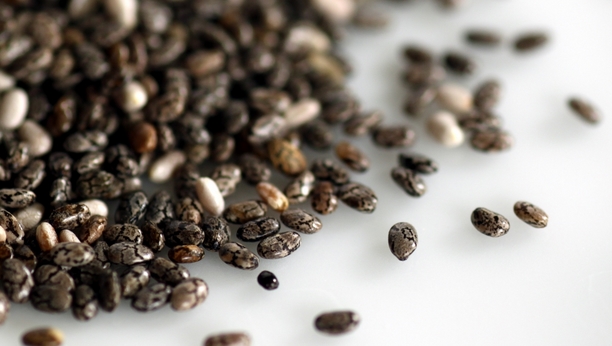
Hailed by the Mesoamerican culture as grains sent by the heavens, chia seeds remain a highly respected alternative remedy for various health conditions. Its use in medicine is varied and its efficacy is further highlighted by the fact that you need not take a lot of it in order to receive its effects. Gram for gram, chia seeds contain more macro and micronutrients than more commonly known beneficial crops. The grain also contains low concentrations of prolamin as compared to other plant protein sources such as chickpeas. This suggests that people suffering from Celiac disease may safely incorporate chia seeds into their diet without fear of an allergic reaction.
If you haven’t tried chia seeds yet, here are seven reasons why you should start.
- They are excellent sources of fiber – Two tablespoons (or around 28 grams) of chia seeds provides almost 40 percent of the average person’s recommended daily fiber intake. Consuming lots of fiber helps with digestion and decreases the likelihood of developing cardiovascular disease and diabetes.
- They protect against oxidative stress – Chia seeds contain vast amounts of polyphenols that protect against free radical damage. The grain has strong antioxidant capacity.
- They keep your heart healthy – Research proves that consuming chia seeds lowers the risk of hypertension, a known risk factor for developing cardiovascular disease. Chia seeds are also extremely effective at preventing and/or managing other risk factors associated with heart disease, such as diabetes and obesity.
- They keep you fit – Obesity is a worrisome health condition, but so too is being underweight. You need to be at a proper weight; one that has the proper amount of fat for the necessary production of hormones. Chia seeds aid in weight loss but are also packed with enough protein to keep a healthy nutritional profile. (Related: Chia seeds contain 7.5 times the omega-3 content of salmon, as well as the highest protein content of any edible seed.)
- They manage blood sugar levels – Chia seeds are considered a “functional food” because they directly influence your blood sugar levels. Studies have shown that incorporating chia seeds into one’s diet can improve blood glucose levels.
- They improve athletic performance – Athletes are normally told to load up on carbohydrates prior to an event to increase their muscle glycogen stores. One study concluded that athletes who drank a sports drink supplemented with chia showed higher levels of recovery following intense exercise.
- They improve skin conditions – Chia seeds can be applied topically to alleviate symptoms of pruritus (itchy skin and inflamed lesions caused by scratching).
The power of the elements: Discover Colloidal Silver Mouthwash with quality, natural ingredients like Sangre de Drago sap, black walnut hulls, menthol crystals and more. Zero artificial sweeteners, colors or alcohol. Learn more at the Health Ranger Store and help support this news site.
Chia seeds can be easily incorporated into your diet. Here are some excellent ways to eat them:
- As a pudding – Soak seeds in water or milk overnight to get a tapioca-like pudding the next day! You can try adding some spices and honey to it for a healthy and nutritious breakfast.
- For muffins – Add chia seeds to your favorite muffin recipe. We also recommend trying them for pancakes, waffles, and even homemade granola.
- As a topping – Top off your favorite salad or yogurt with a dash of chia seeds. One tablespoon of chia seeds provides five grams of fiber and three grams of protein.
- Bake them into bread – Chia seeds have a neutral flavor, making them an excellent additive for bread.
- Make them into a spread – You can make jam with chia seeds. Our favorite example is a blueberry variety. For this recipe, add a few tablespoons of maple syrup and ¼ cup chia seeds to a few cups of blueberries. Stir the mixture over medium-low heat until it thickens.
- As a breading – Replace flour with chia seeds when you bread your chicken or fish.
Chia seeds are incredibly good for you and super easy to incorporate into your diet. For more articles on other healthy grains, visit Nutrients today.
Sources include:
CMS.Herbalgram.org
Health
